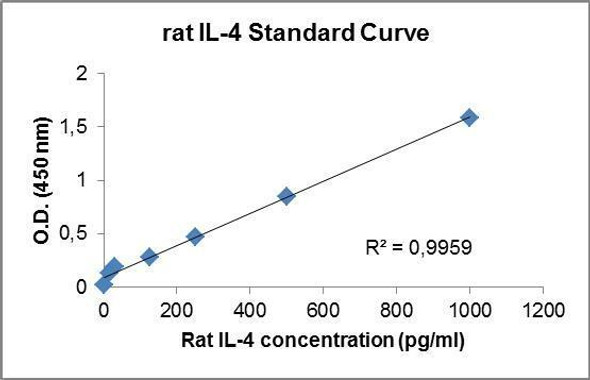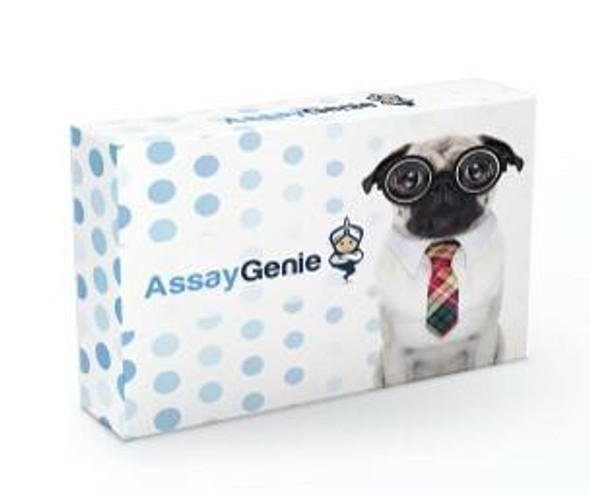Description
Rat CART PharmaGenie ELISA Kit (SBRS0120)
| Product SKU: | SBRS0120 |
| Size: | 96T |
| Application: | Cross Reactivity: This ELISA kit shows no cross-reactivity with any of the cytokines tested: Ghrelin, Nesfatin, Angiotensin II, NPY and APC. |
| Uniprot: | P49192 |
| Synonyms: | Cocaine- and amphetamine-regulated transcript protein |
| Target Species: | Human, Mouse, Rat |
| Compatible Sample Types: | Cell Culture Supernatants, Serum |
| Design Principle: | Competition-based |
| Method of Detection: | Colorimetric |
| Quantitative/Semi-Quantitative: | Quantitative |
| Range: | 1-10,000 ng/ml |
| Sensitivity: | 7.2 pg/ml |
| Recommended Dilution: | Human: 16X, Mouse: 8X, Rat: 16X |
| Storage/Stability: | Standard, Biotinylated CART peptide, and Positive Control should be stored at -20°C after arrival. Avoid multiple freeze-thaws. The remaining kit components may be stored at 4°C. Opened Microplate Wells and antibody (Item N) may be stored for up to 1 month at 2 to 8°C. Return unused wells to the pouch containing desiccant pack and reseal along entire edge. |
- Pre-Coated 96-well Strip Microplate
- Wash Buffer
- Standard Peptide
- Assay Diluent(s)
- Biotinylated Peptide
- HRP-Streptavidin
- TMB One-Step Substrate
- Stop Solution
- Assay Diagram
- Positive Control Sample
- Capture Antibody
- Technical Manual
Other materials and equipment required:
The Assay Genie Rat CART PharmaGenie ELISA Kit (SBRS0120) will require other equipment and materials to carry out the assay. Please see list below for further details.
- Distilled or deionized water
- Precision pipettes to deliver 2 ul to 1 ml volumes
- Adjustable 1-25 ml pipettes for reagent preparation
- 100 ml and 1 liter graduated cylinders
- Tubes to prepare standard and sample dilutions
- Orbital shaker
- Aluminum foil
- Saran Wrap
- Absorbent paper
- Microplate reader capable of measuring absorbance at 450nm
- SigmaPlot software (or other software that can perform four-parameter logistic regression models)
- Prepare all reagents, samples and standards as instructed.
- Add 100 ul detection antibody to each well.
- Incubate 1.5 h at RT or O/N at 4°C.
- Add 100 ul standard or sample to each well.
- Incubate 2.5 h at RT.
- Add 100 ul prepared streptavidin solution.
- Incubate 45 min at RT.
- Add 100 ul TMB One-Step Substrate Reagent to each well.
- Incubate 30 min at RT.
- Add 50 ul Stop Solution to each well.
- Read plate at 450 nm immediately.
Cocaine-and amphetamine-regulated transcript (CART) codes for a neuropeptide system with a number of biological roles. The high conservation of CART across species suggests that it has an important role in mammalian physiology. CART is widely expressed in the central nervous system and the periphery, but is particularly concentrated in the hypothalamus. CART peptides appear to have an important function in the regulation of energy homeostasis. CART interacts with a number of central appetite circuits. Hypothalamic CART expression is regulated by a number of peripheral factors, including the adipose hormone leptin. Several research groups have shown that intracerebroventricular administration of CART (55-102) reduces appetite and stimulates energy expenditure. Animal studies show that CART knockout mice demonstrate small but significant increases in weekly food consumption, body weight and fat mass compared with their wild-type littermates when on a high-fat diet. These reports suggest that CART peptide acts as an endogenous inhibitor of food intake. On the other hand, hypothalamic CART may also play an orexigenic role under specific circumstances, as injection of CART (55-102) into specific hypothalamic nuclei increases food intake. The CART system demonstrates multiple roles in energy homeostasis, depending on the internal and external milieu. The development of specific CART antagonists would be very useful in dissecting these multiple roles.






